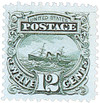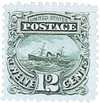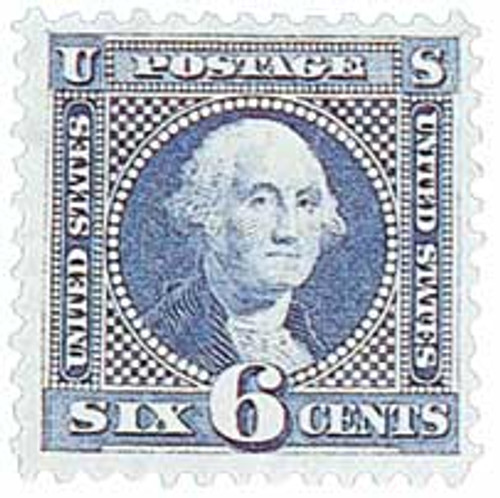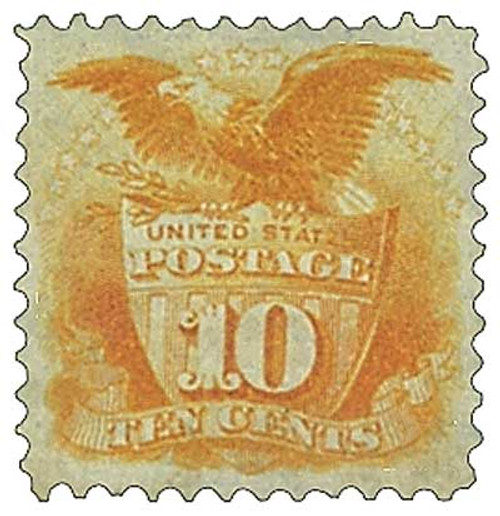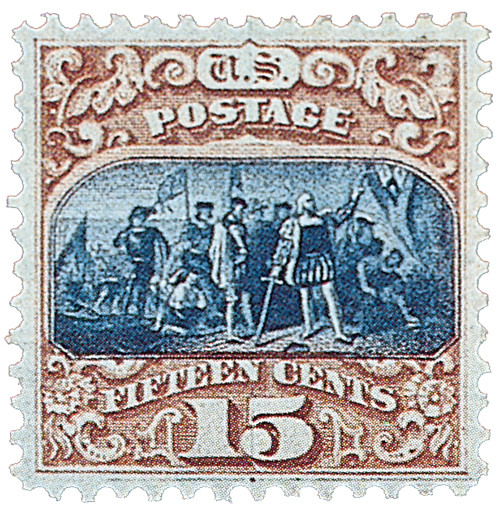
# 128 - 1875 12c S.S. Adriatic, green
U.S. #128
1875 12¢ SS Adriatic
1875 Re-Issue of 1869 Issue
Earliest Known Use: March 20, 1880
Quantity sold: 1,584
Printed by: National Bank Note Company
Method: Flat plate
Watermark: None
Perforation: 12
Color: Green
As the nations centennial approached, organizers began planning a grand celebration in Philadelphia. It would be the first Worlds Fair to be held in the United States. To commemorate the event, the Post Office Department reproduced all US postal issues for display and sale at the Centennial Exhibition.
Originally produced with a grill, the 1869 Pictorial designs were reissued in 1875 without grills. The reissues were not sold at regular stamp windows, but were made for a Post Office Department display at the 1876 Centennial Exposition. Sets were sold directly to collectors by the Post Office Department in Washington, DC.
The National Bank Note Company produced the reprints in 1875. They are on hard white paper, and feature crackly white gum. A new plate of 150 subjects was made for the 1¢ and for the frame of the 15¢. The frame on the 15¢ is the same as type I but without the fringe of brown shading lines around the central vignette.
U.S. #128
1875 12¢ SS Adriatic
1875 Re-Issue of 1869 Issue
Earliest Known Use: March 20, 1880
Quantity sold: 1,584
Printed by: National Bank Note Company
Method: Flat plate
Watermark: None
Perforation: 12
Color: Green
As the nations centennial approached, organizers began planning a grand celebration in Philadelphia. It would be the first Worlds Fair to be held in the United States. To commemorate the event, the Post Office Department reproduced all US postal issues for display and sale at the Centennial Exhibition.
Originally produced with a grill, the 1869 Pictorial designs were reissued in 1875 without grills. The reissues were not sold at regular stamp windows, but were made for a Post Office Department display at the 1876 Centennial Exposition. Sets were sold directly to collectors by the Post Office Department in Washington, DC.
The National Bank Note Company produced the reprints in 1875. They are on hard white paper, and feature crackly white gum. A new plate of 150 subjects was made for the 1¢ and for the frame of the 15¢. The frame on the 15¢ is the same as type I but without the fringe of brown shading lines around the central vignette.



